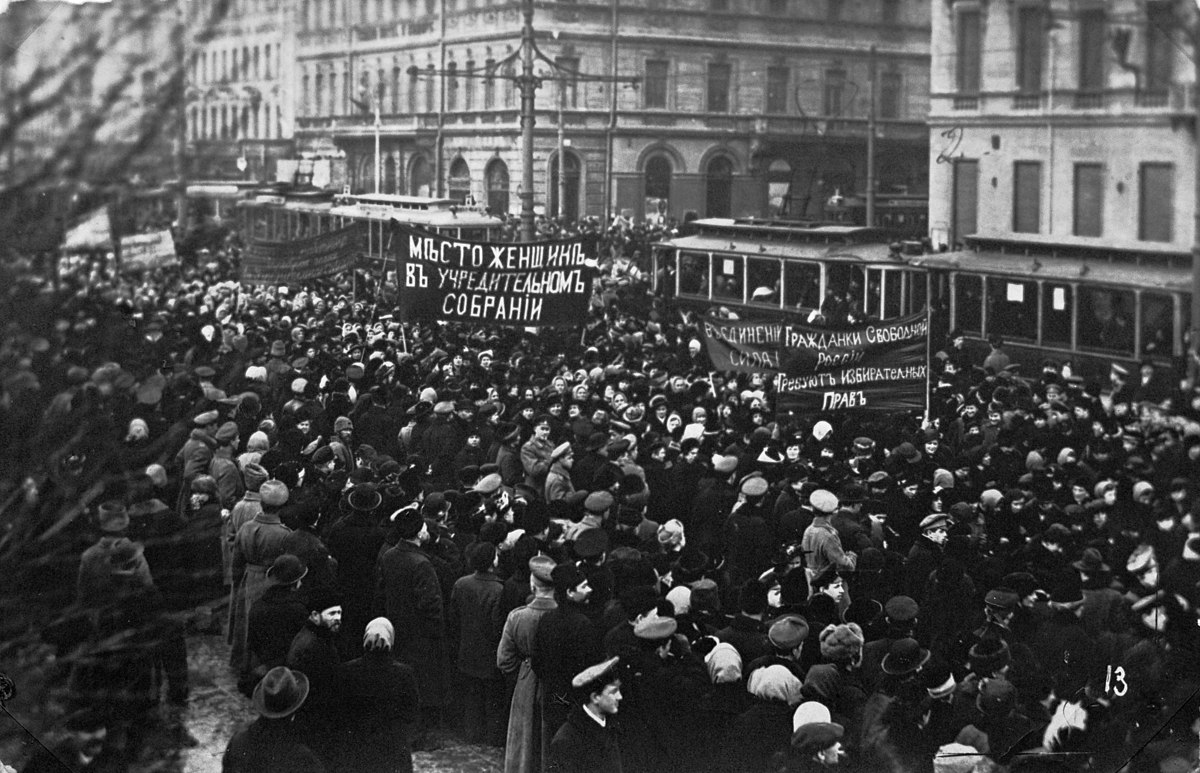
3.3.Russian Revolution
Economically, widespread inflation and food shortages in Russia contributed to
the revolution. Militarily, inadequate supplies, logistics, and weaponry led to heavy losses that the Russians suffered during World War I; this further weakened Russia's view of Nicholas II. They viewed him as weak and unfit to rule.
In 1917, two revolutions swept through Russia, ending centuries of imperial rule and setting into motion political and social changes that would lead to the eventual formation of the Soviet Union.
However, while the two revolutionary events took place within a few short months of 1917, social unrest in Russia had been brewing for many years prior to the events of that year.
In the early 1900s, Russia was one of the most impoverished countries in Europe with an enormous peasantry and a growing minority of poor industrial workers. Much of Western Europe viewed Russia as an undeveloped, backwards society.
The Russian Empire practised serfdom—a form of feudalism in which landless peasants were forced to serve the land-owning nobility—well into the nineteenth century.
In 1833, Emperor Nicholas I adopted the decidedly nationalistic motto “Orthodoxy, Autocracy, and Nationality” as the official ideology of Russia. Three components of the triad were:
Orthodoxy: Adherence to Orthodox Christianity and protection of the Russian Orthodox Church
Autocracy: Unconditional loyalty to the Imperial House of Romanov in return for paternalistic protection of all orders of social hierarchy in Christianity.
Nationality: A sense of belonging to a particular nation and sharing that nation’s common history, culture, and territory.
Biggest causes of the Russian revolution?
1. Weak leadership of Czar Nicholas II , clung to autocracy despite changing times
2. Poor working conditions, low wages, and hazards of industrialization
3.New revolutionary movements that believed a worker-run government should replace czarist rule
4. Russian defeat in the Russo-Japanese War (1905)
Russia’s final czar, Nicholas II, was forced to abdicate his throne in March 1917.
That created an opening for the charismatic Bolshevik leader Vladimir Lenin to seize power by November, soon establishing the Union of Soviet Socialist Republics, also known as the Soviet Union.
Four effects of the Russian Revolution.
It abolished the Romanov dynasty.
(ii) It led to the establishment of the world's first communist/socialist government.
(iii) The new Soviet Government announced its withdrawal from the First World War.
(iv) The socialist government announced the nationalization of all industries, private lands.
Within decades, Soviet rulers—including the infamous Joseph Stalin, who killed millions of Soviets as part of a political purge—transformed the country into a fearsome military power.
It engaged the U.S. in a decades-long struggle for global dominance—a “Cold War” not just over territory, but also the very survival of Western democracy.
For much of the 20th century, the Soviet threat loomed over every aspect of American life, from politics to technology to pop culture, until it collapsed in 1991.
Communist Countries in the 1960s?
# Russia along with 14 other previously autonomous countries uniting to make up the USSR.
# Soviet Union, former northern Eurasian empire (1917/22–1991) stretching from the Baltic and Black seas to the Pacific Ocean and, in its final years, consisting of 15 Soviet Socialist Republics (S.S.R.’s):-
# Armenia, Azerbaijan, Belorussia (now Belarus), Estonia, Georgia, Kazakhstan, Kirgiziya (now Kyrgyzstan), Latvia, Lithuania, Moldavia (now Moldova), Russia, Tajikistan, Turkmenistan, Ukraine, and Uzbekistan. The capital was Moscow, then and now the capital of Russia.
# At its greatest extent, between 1946 and 1991 (the figures and descriptions given below refer to this period), the U.S.S.R. covered some 8,650,000 square miles (22,400,000 square kilometres), seven times the area of India and two and one-half times that of the United States. The country occupied nearly one-sixth of the Earth’s land surface, including the eastern half of Europe and roughly the northern third of Asia. Nearly 130 ethnic groups populated the vast country, which spanned 11 time zones
# Why did so many countries join the USSR?
At the beginning, the Soviet Union was open for any country to join. Any country, that is, that would throw away it's bourgeois exploitators and become ruled by proletarians. The Bolshevik Revolution in Russia was seen only as a prologue to the world revolution.
# The countries that made up the 12 communist ruled countries are:
China, Albania, Bulgaria, Czechoslovakia, East Germany, Poland, Hungary, Romania, Yugoslavia, Cuba, North Vietnam and North Korea.
